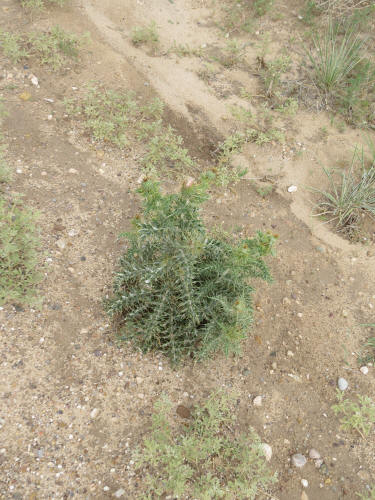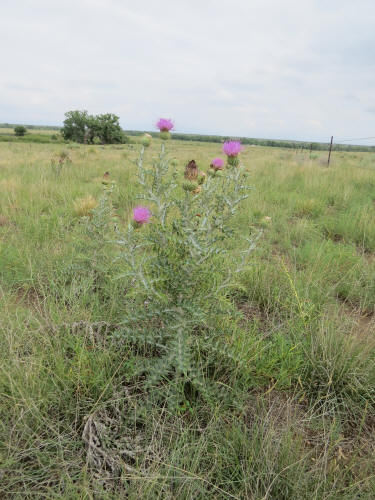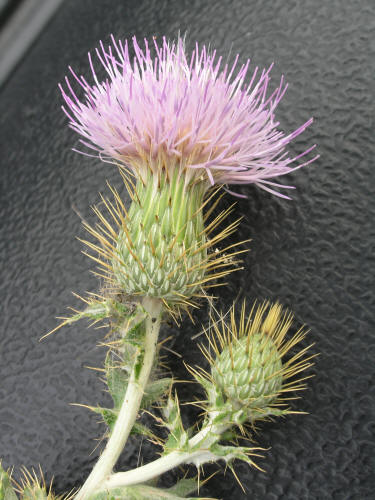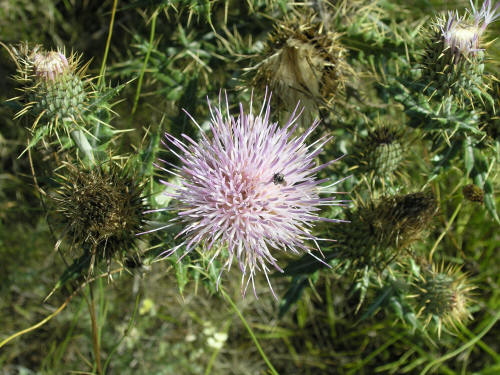Go to Midwest Weeds and Wildflowers Home Page
Yellowspine Thistle
Cirsium ochrocentrum A. Gray
Asteraceae (Sunflower Family)
▲▼ young rosettes
▲▼ slightly older rosettes

▲▼ plants initiating flowering stems
▲▼ plants initiating flowering stems

▲ plant stems

▲▼mature, flowering plants
▲▼mature, flowering plants
▲mature, flowering plants
▲▼ closer view of inflorescences/flowers
▲▼ closer view of inflorescences/flowers
▲▼ closer view of inflorescences/flowers

▲▼ closer view of inflorescences/flowers


▲▼ post-flowering plants producing seed

▲▼ post-flowering plants producing seed
▲ mature involucres beginning to shed seed; also showing strong yellow spines on bracts
Cirsium ochrocentrum
Gray, Yellowspine Thistle:
(Bayer
Code:
CIROH; US Code CIOC2)
·
Native perennial thistle that grows 1-3 feet tall, with little
branching of stems
·
Both stems and leaves may be gray-green, grayish or whitish due to
presence of many soft, white hairs
·
Leaf margins lobed, with lobes pointed and tipped with 0.25 to 0.75
inch long, yellow spine; leaf lobes often pointed upward; leaf bases often
extend down stem slightly, producing leafy-wing appendages on parts of stem
·
Flower heads produced singly at top of extended leafless,
white-wooly stems; bracts on inflorescence heads are tipped with strong,
yellow, outward-pointing spine up to 0.5 inch long; flowers May to September
·
Found in full sun, disturbed sites, dry soils, prairies,
right-of-ways
·
Very similar to native
wavyleaf thistle (Cirsium
undulatum), but base of leaves on yellowspine thistle
extend down stem briefly, while wavyleaf thistle leaf bases do not extend
down stem; also wavyleaf thistle is a creeping perennial plant with creeping
roots
This is one of the native thistles that is sometimes mistaken for an
invasive thistle species.
Native thistles provide food and nectar for native insects (including bees
and butterflies), birds and other animals, and generally should not be
killed indiscriminately.
Maintaining proper grazing levels can often reduce their unwanted increase
in pastures and rangeland.
Go to Midwest Weeds and Wildflowers Home Page
Updated January 24, 2019